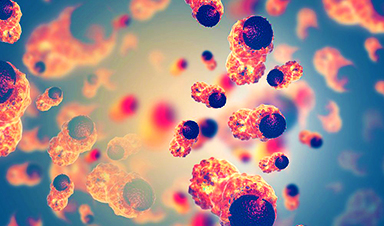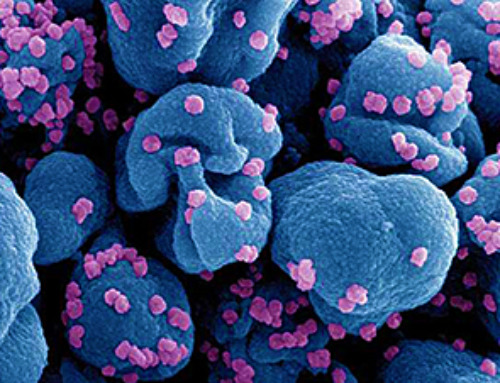Cancer remains one of the most formidable health challenges worldwide, affecting millions every year.
According to a study by Cancer Research UK, it’s estimated that there were 18.1 million new cancer diagnoses globally in 2020. This alarming figure underscores the rising trend in cancer diagnoses, the study states, “Worldwide there will be 28 million new cases of cancer each year by 2040.”
It’s not just about the overwhelming statistics but its profound impact on patients and their families. The treatment landscape, although progressing, still yearns for innovative breakthroughs.
NANOBIOTIX and NBTXR3
NANOBIOTIX, a biotechnology firm aiming to provide new treatment solutions for cancer patients, has recently welcomed Dr. Louis Kayitalire as their chief medical officer. Dr. Kayitalire boasts a prolific background in the biopharmaceutical sector, primarily focusing on oncology. He has been an integral part of the development and commercialization of various oncology therapeutics.
Laurent Levy, co-founder and chairman of NANOBIOTIX, praised Dr. Kayitalire’s innovative clinical acumen, asserting that his experience would be paramount in forwarding the company’s ventures, especially regarding NBTXR3.
Dr. Kayitalire previously held significant roles at major companies like F-star Biotechnology, Bristol-Myers Squibb, Celgene, and Eli Lilly. He expressed his excitement about the potential of NBTXR3 in changing the landscape of cancer treatment.
NBTXR3 Overview
NBTXR3, a unique oncology product, comprises hafnium oxide nanoparticles. Administered via a single intratumoral injection, it is then activated using radiotherapy. The primary goal is to cause significant tumor cell death in the injected area upon activation, which should then stimulate an adaptive immune response against the cancer.
NANOBIOTIX believes that due to its mode of action, NBTXR3 could be adapted for any solid tumor treatable with radiotherapy and combined with any therapeutic combination, especially immune checkpoint inhibitors.
Current evaluations for NBTXR3 involve its application in various solid tumors either as a standalone or in combination with anti-PD-1 immune checkpoint inhibitors.
Furthermore, NANOBIOTIX has embarked on collaborations to simultaneously develop the product while focusing on its primary developmental pathways. Partnerships include those with The University of Texas MD Anderson Cancer Center, LianBio, and recently with Janssen Pharmaceutica NV.
About NANOBIOTIX
Founded in 2003 and based in Paris, France, NANOBIOTIX is an advanced clinical biotechnology company. They are determined to redefine treatment outcomes for numerous patients by introducing groundbreaking physics-based therapeutic strategies.
The company holds over 20 umbrella patents linked to three distinct nanotechnology platforms. These platforms cater to oncology, bioavailability and biodistribution, and central nervous system disorders. Their principal focus is the development of NBTXR3, which has already received a CE marking in Europe for soft tissue sarcoma treatment under the brand name Hensify®.
While NANOBIOTIX remains a pivotal player in the field, other startups also contribute significantly to advancements in cancer treatment.
Among the many startups in this domain, Nanogenics stands out. They are a leading therapeutic provider that harnesses nanoscale technology and utilises siRNA to treat cancer and fibrotic diseases.
By leveraging their proprietary gene delivery technology, LipTide, they are adept at precisely delivering therapeutic siRNAs. Their premier drug, ECP-102, enhances the efficacy of chemotherapy by increasing the vulnerability of cancer cells to cell death.
Conclusion
The evolving landscape of cancer treatment is witnessing groundbreaking advancements spearheaded by entities like NANOBIOTIX. With the introduction of pioneering therapies, the future holds promise for more effective and diverse solutions in battling this global health crisis. Similarly, the contributions of startups such as Nanogenics emphasise a collective drive in the biotech community to push boundaries, offering hope and a brighter prognosis for patients worldwide.
News
Platelet-inspired nanoparticles could improve treatment of inflammatory diseases
Scientists have developed platelet-inspired nanoparticles that deliver anti-inflammatory drugs directly to brain-computer interface implants, doubling their effectiveness. Scientists have found a way to improve the performance of brain-computer interface (BCI) electrodes by delivering anti-inflammatory drugs directly [...]
After 150 years, a new chapter in cancer therapy is finally beginning
For decades, researchers have been looking for ways to destroy cancer cells in a targeted manner without further weakening the body. But for many patients whose immune system is severely impaired by chemotherapy or radiation, [...]
Older chemical libraries show promise for fighting resistant strains of COVID-19 virus
SARS‑CoV‑2, the virus that causes COVID-19, continues to mutate, with some newer strains becoming less responsive to current antiviral treatments like Paxlovid. Now, University of California San Diego scientists and an international team of [...]
Lower doses of immunotherapy for skin cancer give better results, study suggests
According to a new study, lower doses of approved immunotherapy for malignant melanoma can give better results against tumors, while reducing side effects. This is reported by researchers at Karolinska Institutet in the Journal of the National [...]
Researchers highlight five pathways through which microplastics can harm the brain
Microplastics could be fueling neurodegenerative diseases like Alzheimer's and Parkinson's, with a new study highlighting five ways microplastics can trigger inflammation and damage in the brain. More than 57 million people live with dementia, [...]
Tiny Metal Nanodots Obliterate Cancer Cells While Largely Sparing Healthy Tissue
Scientists have developed tiny metal-oxide particles that push cancer cells past their stress limits while sparing healthy tissue. An international team led by RMIT University has developed tiny particles called nanodots, crafted from a metallic compound, [...]
Gold Nanoclusters Could Supercharge Quantum Computers
Researchers found that gold “super atoms” can behave like the atoms in top-tier quantum systems—only far easier to scale. These tiny clusters can be customized at the molecular level, offering a powerful, tunable foundation [...]
A single shot of HPV vaccine may be enough to fight cervical cancer, study finds
WASHINGTON -- A single HPV vaccination appears just as effective as two doses at preventing the viral infection that causes cervical cancer, researchers reported Wednesday. HPV, or human papillomavirus, is very common and spread [...]
New technique overcomes technological barrier in 3D brain imaging
Scientists at the Swiss Light Source SLS have succeeded in mapping a piece of brain tissue in 3D at unprecedented resolution using X-rays, non-destructively. The breakthrough overcomes a long-standing technological barrier that had limited [...]
Scientists Uncover Hidden Blood Pattern in Long COVID
Researchers found persistent microclot and NET structures in Long COVID blood that may explain long-lasting symptoms. Researchers examining Long COVID have identified a structural connection between circulating microclots and neutrophil extracellular traps (NETs). The [...]
This Cellular Trick Helps Cancer Spread, but Could Also Stop It
Groups of normal cbiells can sense far into their surroundings, helping explain cancer cell migration. Understanding this ability could lead to new ways to limit tumor spread. The tale of the princess and the [...]
New mRNA therapy targets drug-resistant pneumonia
Bacteria that multiply on surfaces are a major headache in health care when they gain a foothold on, for example, implants or in catheters. Researchers at Chalmers University of Technology in Sweden have found [...]
Current Heart Health Guidelines Are Failing To Catch a Deadly Genetic Killer
New research reveals that standard screening misses most people with a common inherited cholesterol disorder. A Mayo Clinic study reports that current genetic screening guidelines overlook most people who have familial hypercholesterolemia, an inherited disorder that [...]
Scientists Identify the Evolutionary “Purpose” of Consciousness
Summary: Researchers at Ruhr University Bochum explore why consciousness evolved and why different species developed it in distinct ways. By comparing humans with birds, they show that complex awareness may arise through different neural architectures yet [...]
Novel mRNA therapy curbs antibiotic-resistant infections in preclinical lung models
Researchers at the Icahn School of Medicine at Mount Sinai and collaborators have reported early success with a novel mRNA-based therapy designed to combat antibiotic-resistant bacteria. The findings, published in Nature Biotechnology, show that in [...]
New skin-permeable polymer delivers insulin without needles
A breakthrough zwitterionic polymer slips through the skin’s toughest barriers, carrying insulin deep into tissue and normalizing blood sugar, offering patients a painless alternative to daily injections. A recent study published in the journal Nature examines [...]





















